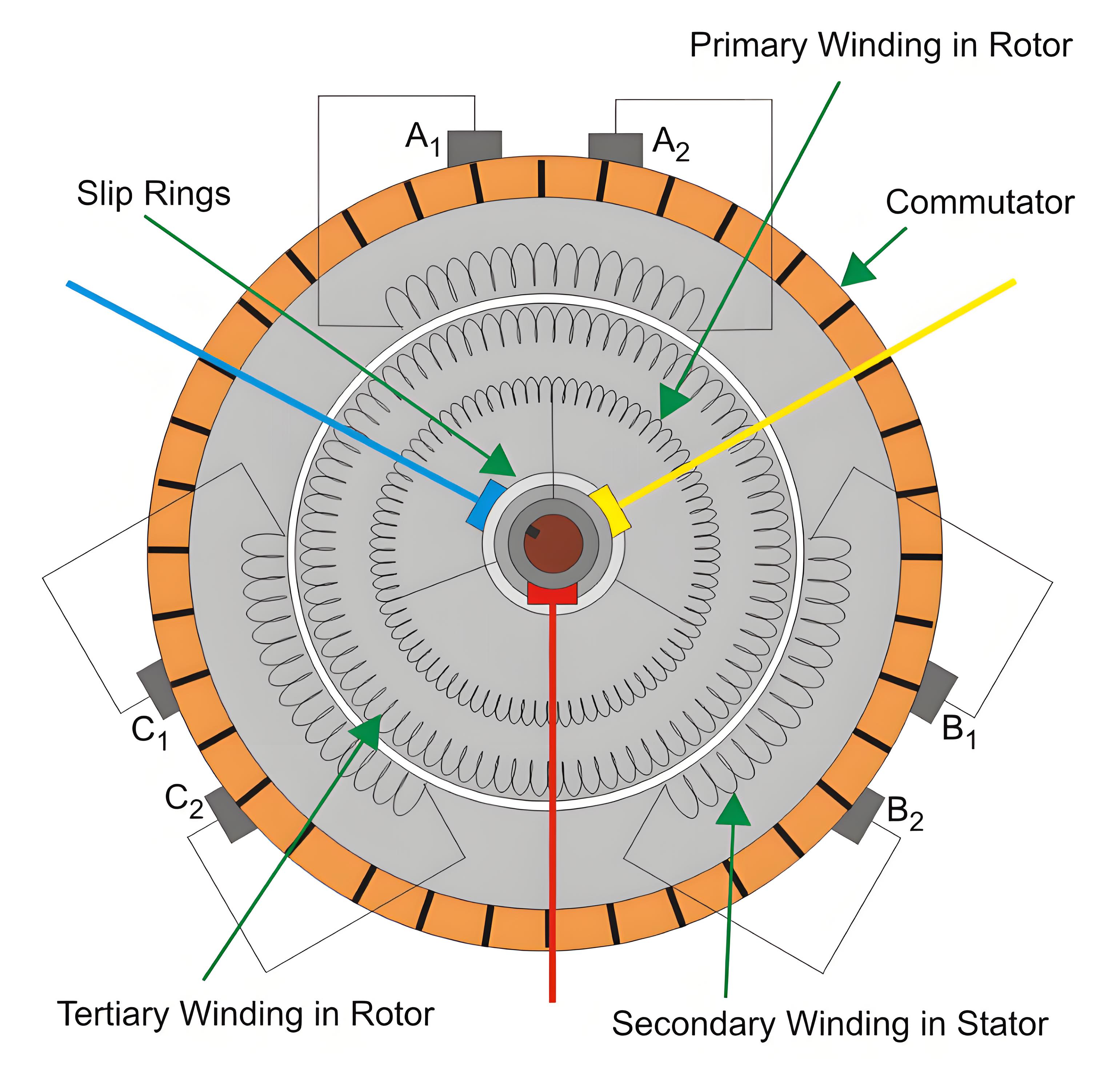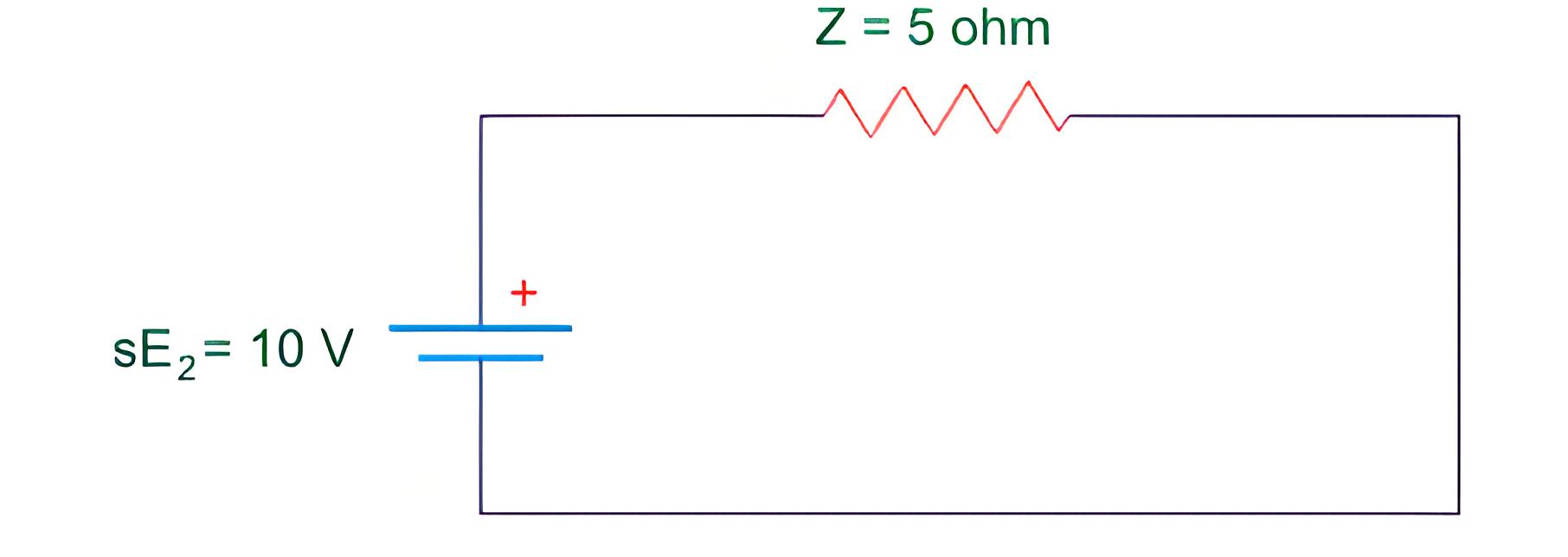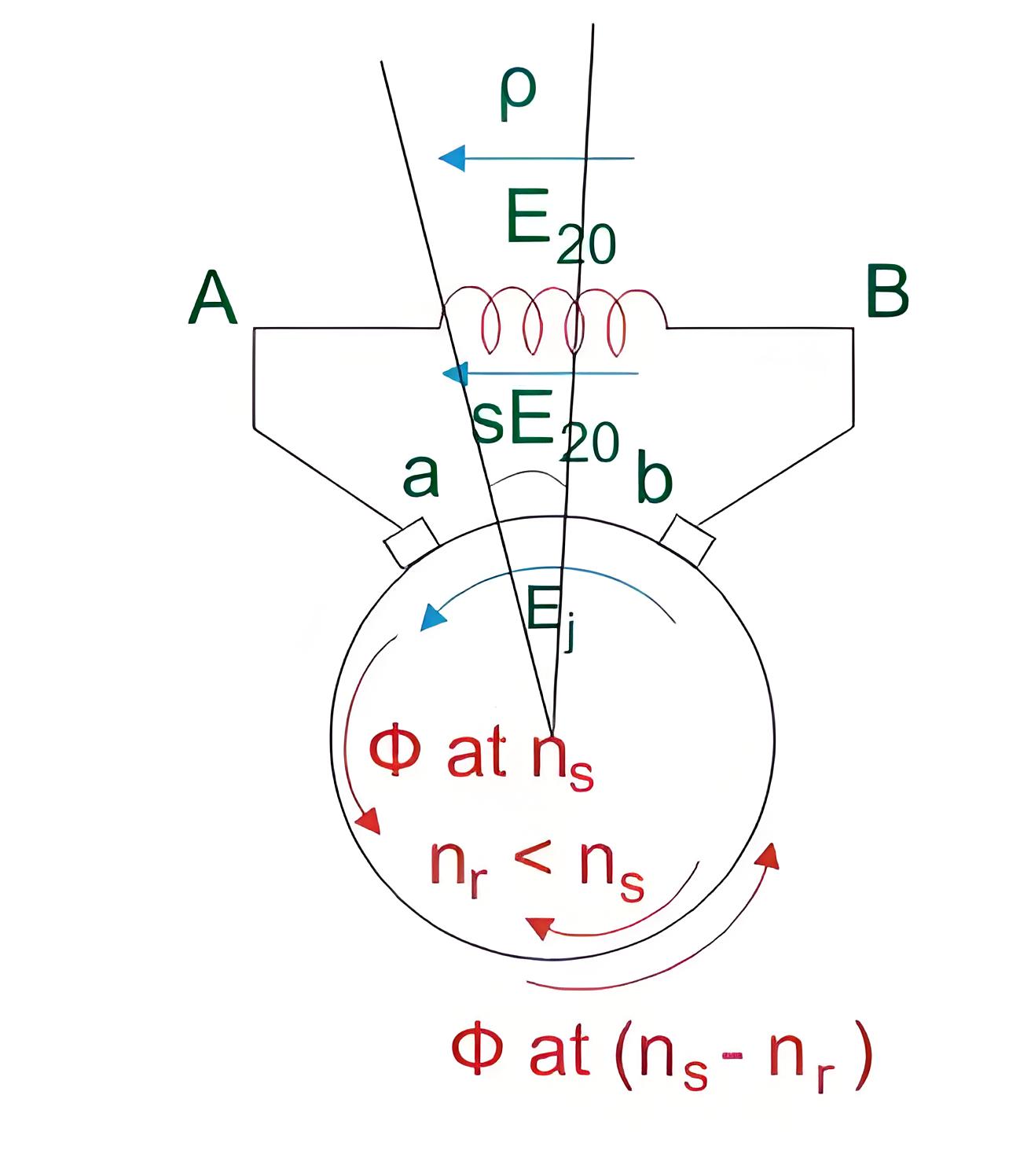What is the Schrage Motor Operation Principle?
What is the Schrage Motor Operation Principle?
Schrage Motor Definition
A Schrage motor is defined as a combination of a wound rotor induction motor and a frequency converter with primary, secondary, and tertiary windings.

Operation Principle
At standstill, three-phase currents in the primary winding produce a rotating field. This rotating field cuts the secondary winding at synchronous speed (ns).
Therefore according to Lenz’s law the rotor will rotate in a direction so as to oppose the cause i.e. to induce slip frequency emfs into secondary. Therefore the rotor rotates opposite to the direction of rotation of synchronously rotating field. Now air gap field is rotating at slip speed ns – nr with respect to secondary. Therefore the emf collected by the stationary brushes is at slip frequency and hence suitable for injection into secondary.
Speed Control
Speed control of schrage motor is possible by varying the injected emf into the motor which can be controlled by changing the angular displacement between the two brushes. To understand the speed control of schrage motor let us understand the speed control in WRIMs using injected emf method.
Consider the following rotor circuits (values are only for illustration purpose).
Let initially electrical torque (Tspeed control of schrage motore) = load torque (Tl) = 2Nm
Rotor current Ir = 2A.
Let sE2 = slip emf induced in the rotor ckt.
And Ej = emf injected in the rotor ckt.

Power Factor Control
Power factor improvement is achieved by introducing an angular displacement between the tertiary and secondary winding axes, aligning the emf phasors correctly.

Characteristics of Schrage Motor
The Schrage motor’s slip and speed at no load depend on machine constants and brush separation, allowing for two different speeds based on the phase of the injected emf.
The Electricity Encyclopedia is dedicated to accelerating the dissemination and application of electricity knowledge and adding impetus to the development and innovation of the electricity industry.













